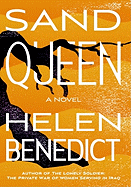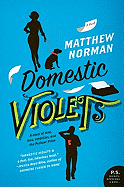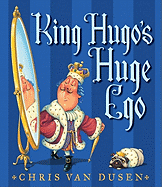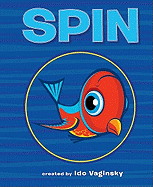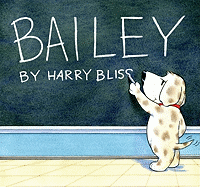Welcome to a new and occasional Shelf Awareness for Readers feature, in which we round up books of a type or on a theme for your reading pleasure. This list is the summer 2011 culling of the best in new trade paperback fiction; our nonfiction roundup will appear soon. The picks here are based on our preferences. We know that not everyone will love all of them, but we hope you'll find something here to enjoy as the summer winds down.
We've listed them alphabetically by author's last name--no rankings implied by this list's order. Let us know what you think: info@shelf-awareness.com.
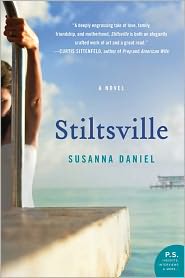 Stiltsville by Susanna Daniel (Harper Perennial)
Stiltsville by Susanna Daniel (Harper Perennial)
There are lots of "girl meets boy, girl marries boy, life goes on" books out there--for better or worse, right? But even though Frances and Dennis meet in 1969 and stay married through divorce-heavy times, even though their home is a house on stilts in Florida, the most remarkable thing about this debut novel from Susanna Daniel is the narrative perspective, a life told in Frances's unsentimental yet completely loving voice. While the events in this couple's life are ordinary, the way in which they're presented is anything but.
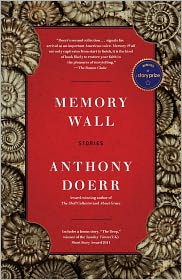 Memory Wall by Anthony Doerr (Scribner)
Memory Wall by Anthony Doerr (Scribner)
"What is memory, anyway?" asks a character in one of these stories linked by Anthony Doerr's musings on that human capacity for remembering and recall. The first and last pieces in the collection are, tellingly, both about elderly women: Since women in the world tend to outlive men, and females are so often seen as the memory keepers of their families, these pieces provide a coherence. The first is set in the near future, with a woman trying to stave off dementia by recording her memories on cartridges that can be inserted into her brain; the last involves a Holocaust survivor's tragic recall of events during epileptic seizures.
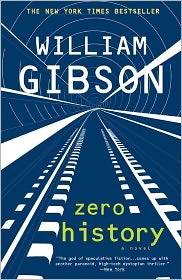 Zero History by William Gibson (Berkley)
Zero History by William Gibson (Berkley)
If you don't associate the words "fun" and "light" with William Gibson's work, you're not alone--the novelist tends to write portentous stories that involve lots of pop culture references wound up with futuristic plot schemes. However, his latest novel is both fun and light--in a Gibsonian way. His heroine, Hollis Henry (who appeared in 2007's Spook Country), is now on a gig to get her boss Hubertus Bigend into the government contracting game through military-uniform design. Her helpmeet in this mission is Milgrim (cryptologist and former speedhead), who has "zero history" (i.e., he lives "off the grid"). Here, Gibson's usual themes about government and control are combined with new ones about fashion, commerce and celebrity.
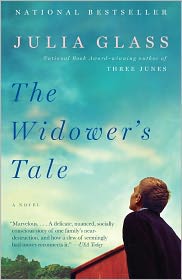 The Widower's Tale by Julia Glass (Anchor)
The Widower's Tale by Julia Glass (Anchor)
If you were slightly disappointed by 2008's I See You Everywhere by Glass, good news: her latest novel returns to territory she delineated in Three Junes and The Whole World Over. There is a family undergoing transition: paterfamilias Percy Darling hates having a daycare center in the barn where his late wife once taught ballet, but allows its progress because he wants his wayward younger daughter, Clover, to teach there. Glass weaves in subplots like a baker creating a lattice top for a pie: sometimes she has to bend back several strips to fit everything in, but when it's finished, there is connectivity and symmetry to the whole.
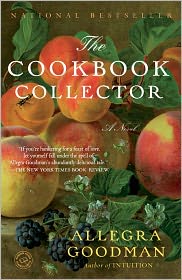 The Cookbook Collector by Allegra Goodman (Dial)
The Cookbook Collector by Allegra Goodman (Dial)
It is truth universally acknowledged that claiming to write "a Sense and Sensibility for the modern age," as Goodman did when she released The Cookbook Collector, is an ambitious notion. So was she successful? Perhaps not entirely, as this tale of two sisters (there are parallels to the Mesdemoiselles Dashwood, certainly) in the dotcom era explodes from the page a lot like the ripe fruit in the cover engraving. However, there is a great deal here for readers to devour happily, including an unlikely romance, a sad betrayal and an odd savior tie together tech, trees and tenderness.
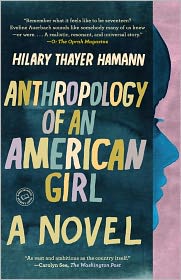 Anthropology of an American Girl by Hilary Thayer Harmann (Spiegel & Grau)
Anthropology of an American Girl by Hilary Thayer Harmann (Spiegel & Grau)
First, the bad news: this debut novel has very little character development. Readers are simply swept up in protagonist Evaline Auerbach's 1980s coming-of-age and consciousness. Now, the good news: its 600-page length allows readers to discern the "anthropology" of a young woman's life through an interior voice that will remind you of nothing less than Holden Caulfield's from The Catcher in the Rye. Harmann originally self-published this book in 2003 to keep her work from becoming overly commercialized. The book has been substantially revised since then, so readers--swept up, or not--will have to be the judges.
 Elegies for the Brokenhearted by Christie Hodgen (W.W. Norton)
Elegies for the Brokenhearted by Christie Hodgen (W.W. Norton)
The five "elegies" in this novel make up the story of Mary Murphy, a child both of a broken family and of the dying industrial Northeast in the 1980s. Mary and her sister, Malinda, catch very few breaks as their neglectful, serial-marrying mother drags them from home to home, but Hodgen is less interested in detailing sadness than in acknowledging the pallor it casts over Mary's life and moving on to explore the characters she encounters. As Mary delivers her elegies--for an uncle, a classmate, a stepfather, a roommate and, finally, her own mother, she reveals herself. It's almost, at last, an ode.
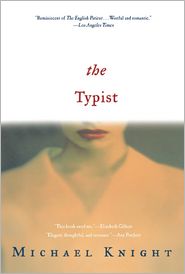 The Typist by Michael Knight (Grove)
The Typist by Michael Knight (Grove)
Knight is an accomplished author of short fiction, and here he uses those skills to craft a fully realized novel that retains the attributes of the best short stories, including concision and cohesion. In post-World War II Japan, Francis "Van" Vancleave winds up detailed as a typist in MacArthur's Tokyo headquarters. Through Van, readers learn much about that era, from its hard realities (the ubiquitous "pan-pan" prostitutes) to its incongruous ironies (busloads of Japanese tourists heading to bombed Nagasaki with their cameras). Neither mystery nor heroic tale, The Typist is a relatively quiet slice of life.
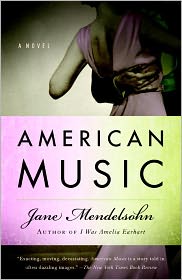 American Music by Jane Mendelsohn (Vintage)
American Music by Jane Mendelsohn (Vintage)
If you liked or loved A Visit from the Goon Squad by Jennifer Egan, you might feel the same about the brilliant Mendelsohn's first novel since I Was Amelia Earheart. That's because, like Egan, Mendelsohn is pursuing high literary fruit, attempting to tie the heart of being human to the products of humanity, and even when she falls off of the ladder and digresses too much, her insight and wit keep you reading. American Music tells the story of a young masseuse and her Iraq War veteran patient, but when their relationship results in visions of people they don't know from past decades, the title's significance makes sense.
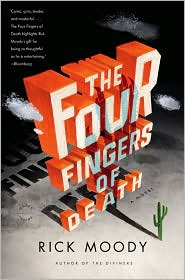 The Four Fingers of Death by Rick Moody (Back Bay)
The Four Fingers of Death by Rick Moody (Back Bay)
This isn't a book to take lightly, mainly because its heft won't let you (ba-da-dum). At 750 pages, this exercise in Moody being moody (and funny, and cynical, and analytical) isn't for every reader, but even though it has flaws, fans of this novelist's discursive, erudite style will revel in every line. The plot involves a blocked novelist named Montese Crandall who owns the rights to an early-1960s horror film called "The Crawling Hand." Crandall's own story forms the first third of the book, the immediate novelization the second and, finally, the imagined aftereffects of the novel's events, the third.
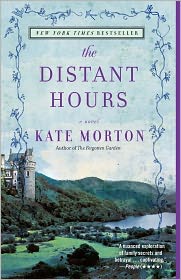 The Distant Hours by Kate Morton (Washington Square)
The Distant Hours by Kate Morton (Washington Square)
Australian author Morton specializes in tales of strange mansions and houses and their mysteries. In this new novel, she's gone all out: the building at the heart of the action is Milderhurst Castle, a decrepit pile in the countryside where three elderly spinster sisters eke out lives with no interference. That is, until a mild-mannered youngish London book editor named Edie Burchill receives a strange, misdirected letter that makes her mother burst into tears. The path to discovering why leads her to Milderhurst and then back in time to World War II, to literary detective work and more--a lot more. The denouement is stunningly effective.
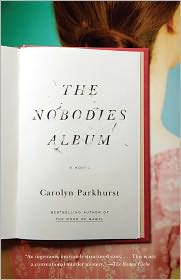 The Nobodies Album by Carolyn Parkhurst (Anchor)
The Nobodies Album by Carolyn Parkhurst (Anchor)
Those who have read Parkhurst's previous work will know that she could find humor and pathos in a phone directory. Combined with her Scheherezade-like ability to spin a tale, this makes Parkhurst a novelist to pay attention to even when her work has weaknesses. This novel's central mystery isn't all that meaty and, yes, there's a lot going on--but the conceit that Parkhurst chooses, that of a novelist who decides to change the endings in all of her books, is one that works perfectly for a writer who is able to juggle lots of balls simultaneously.
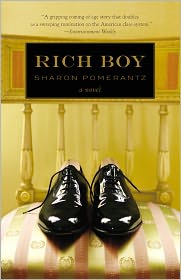 Rich Boy by Sharon Pomerantz (Twelve)
Rich Boy by Sharon Pomerantz (Twelve)
Robert Vishniak is exceedingly handsome and exceedingly smart, qualities that help him escape the blue-collar Jewish Philadelphia neighborhood into which he was born. But when he gets to Tufts University, he finds that there are boundaries he cannot easily pass--ones to which his well-off roommate Sanford Trace seems to hold the key. His initiation, via Trace, into a world of Seven Sisters girls and tony private communities leads to some of his life's greatest events and greatest sorrows. Author Pomerantz looks at the changing landscape of Vishniak's life, as well as the changing socioeconomics of New York City in the late 20th century.
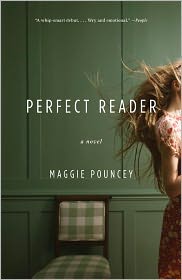 Perfect Reader by Maggie Pouncey (Anchor)
Perfect Reader by Maggie Pouncey (Anchor)
When Flora Dempsey's famous critic and college president father dies, she is surprised to discover he has named her as his literary executor. She heads back to her hometown of Darwin, Mass. (a thinly veiled Amherst; author Pouncey's father, Peter, was president of Amherst College for many years) to sort out his affairs. As she does so, she finally confronts his poetic output, which she's avoided reading for most of her life, and realizes that there was more to her father than she ever allowed herself to believe--and there may be more to a life away from hipster Brooklyn than she could ever imagine, too.
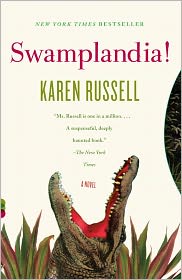 Swamplandia! by Karen Russell (Vintage)
Swamplandia! by Karen Russell (Vintage)
Summing up a book this wild and strange isn't easy, but here goes: 11-year-old Ava Bigtree lives on a tiny peninsula outpost alligator-wrestling theme park with her father, brother and sister, all of whom are mourning the death of their wife and mother from cancer. Ava's sister, Ossie, is in love with the ghost of a dredge-ship laborer; her brother, Kiwi, has run away to mainland Florida to work for an indoor zoo; and Ava herself decides to leave home on an epic quest to save her father's livelihood and her sister's psyche. What happens next is tough and tragic, but also mesmerizing and, ultimately, hopeful.
 Private Life by Jane Smiley (Anchor)
Private Life by Jane Smiley (Anchor)
The title of this book is well chosen, as acclaimed novelist Smiley mines the territory of her own life for her characters Margaret Mayfield and Andrew Early, who are based on her aunt and uncle Frances and Thomas Jefferson Jackson See. The next layer comes through the reader's belief that Smiley intends to portray the Sees' "private life," and the next (perhaps not last?) from the private world of a person married to someone increasingly incapacitated by mental illness. Smiley masterfully contrasts domestic life with public events like the 1906 San Francisco earthquake.
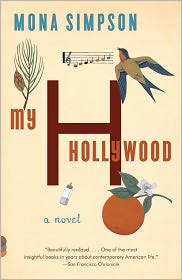 My Hollywood by Mona Simpson (Vintage)
My Hollywood by Mona Simpson (Vintage)
Simpson's latest is a challenging book, and so worth the struggle through cellist Claire's agonies about career versus motherhood in the Los Angeles suburbs. Through Claire, Simpson gives voice to many of the questions women are afraid to raise about modern parenting and, ingeniously, those that Claire doesn't even think to raise are asked by her Filipina nanny, Lola, who narrates alternating chapters. Simpson is far too canny a novelist to allow either woman to appear saintly; they're both flawed, and disenfranchised from their communities due to circumstances and temperaments.
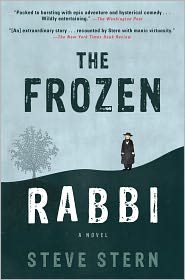 The Frozen Rabbi by Steve Stern (Algonquin)
The Frozen Rabbi by Steve Stern (Algonquin)
A hilarious novel about a rabbi thawed out after a century of being entombed in ice? Yes, really. It's modern-day Memphis, and fat, awkward teenaged Bernie Karp is searching for something to eat in his parents' basement freezer when he accidentally defrosts an Orthodox rebbe who had been drowned in a pond and then frozen, then transported out of the Old Country.... Much of the action is magical, all of it is chaotic, but in the course of explaining Rabbi Eliezer ben Zephyr's journey to rock-star evangelist, Stern somehow touches on all of the aspects of the modern Jewish journey, too.
 French Lessons by Ellen Sussman (Ballantine)
French Lessons by Ellen Sussman (Ballantine)
It's wrong to judge a book by its cover, especially in the case of Sussman's tripartite novel. From the hazy jacket photo of a stylish woman wrapped in Gallic flag colors you might mistakenly think this is a slight, feel-good story of someone's frivolous French vacation. Pas du tout! These linked tales of three young French tutors meeting with their students are sharp, erotic and unexpectedly moving. Josie and Nico, Riley and Philippe, Jeremy and Chantal--these pairings aren't the stuff of chick-lit novels or Hollywood flicks, but instead the accidental kind of everyday meetings that can and do wind up changing lives.
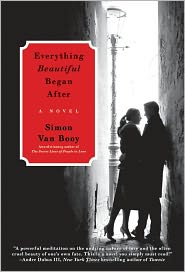 Everything Beautiful Began After by Simon Van Booy (Harper Perennial)
Everything Beautiful Began After by Simon Van Booy (Harper Perennial)
Readers seem to be divided on this book--it's love or hate. Van Booy's novel follows three 20-somethings in Athens. Rebecca, George and Henry--artist, linguist and archeologist, respectively--all wind up in the Greek capital for a summer and become entangled. The author loves aphorisms ("The beauty of artifacts is in how they reassure we're not the first do die"), and if you aren't a romantic at heart, this may not be the book for you. However, if you still have fond memories of a sojourn in an unfamiliar place, especially one in which you experienced beauty and love, curl up in a chair and prepare for a wonderful read.
New in Paperback: Fiction Roundup
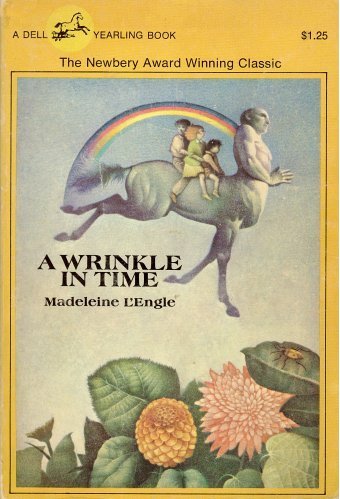 I don't remember the first book I was given, because I was still an infant when my mother started building my library--but I do remember the first book I bought on my own, with allowance money: a Dell Yearling edition of A Wrinkle in Time by Madeleine L'Engle. In fact, I still have that particular copy and have shared it with my daughters.
I don't remember the first book I was given, because I was still an infant when my mother started building my library--but I do remember the first book I bought on my own, with allowance money: a Dell Yearling edition of A Wrinkle in Time by Madeleine L'Engle. In fact, I still have that particular copy and have shared it with my daughters.


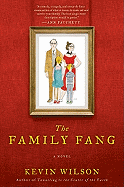 Prepare to hear about The Family Fang by Kevin Wilson; it's our Starred Review today, and the minute your friends and family have read it and started discussing it, you'll want to have already finished it, too.
Prepare to hear about The Family Fang by Kevin Wilson; it's our Starred Review today, and the minute your friends and family have read it and started discussing it, you'll want to have already finished it, too.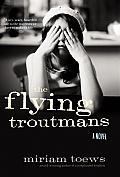 The Flying Troutmans by Miriam Toews is about family members nearly as nutty as the Fangs, but related in a different way. Hattie's sister, Min, has been hospitalized (again) for depression, and her kids, Thebes (11) and Logan (15), desperately need some kind of adult hand in their lives. Hattie is no Clara Barton; she's as reluctant to care for these two as they are to be overseen, and the road trip they all take has been done before. But Toews's great ear for adolescent chatter and her supreme wit carry this novel, and even unbelievable bits soon seem plausible.
The Flying Troutmans by Miriam Toews is about family members nearly as nutty as the Fangs, but related in a different way. Hattie's sister, Min, has been hospitalized (again) for depression, and her kids, Thebes (11) and Logan (15), desperately need some kind of adult hand in their lives. Hattie is no Clara Barton; she's as reluctant to care for these two as they are to be overseen, and the road trip they all take has been done before. But Toews's great ear for adolescent chatter and her supreme wit carry this novel, and even unbelievable bits soon seem plausible.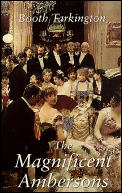 The Magnificent Ambersons by Booth Tarkington is an American classic, a family saga about how the ruling class was forced to change and adapt during the late 19th and early 20th centuries. Tarkington made his novel's setting an ambiguous Midwestern town, but clearly based it on his own hometown of Indianapolis and one of its upper-class neighborhoods. The Ambersons are confounded by the new classes springing up around them, people who "do things." For scion George Amberson Minafer, a choice of debutante will ultimately cost his family their place.
The Magnificent Ambersons by Booth Tarkington is an American classic, a family saga about how the ruling class was forced to change and adapt during the late 19th and early 20th centuries. Tarkington made his novel's setting an ambiguous Midwestern town, but clearly based it on his own hometown of Indianapolis and one of its upper-class neighborhoods. The Ambersons are confounded by the new classes springing up around them, people who "do things." For scion George Amberson Minafer, a choice of debutante will ultimately cost his family their place.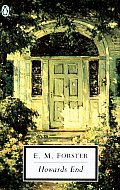 Howards End by E.M. Forster tells a story, like Tarkington's novel, about class and its effect on a family--but in Edwardian England rather than post-Civil War America--and about how a daughter of intellectuals is changed by her relationship with a lower-middle-class man with revolutionary aspirations. The three families involved--the Wilcoxes, the Schlegels and the Basts--are like stair steps of social consciousness, and their interactions mirror the societal shifts occurring throughout the United Kingdom and its colonies.
Howards End by E.M. Forster tells a story, like Tarkington's novel, about class and its effect on a family--but in Edwardian England rather than post-Civil War America--and about how a daughter of intellectuals is changed by her relationship with a lower-middle-class man with revolutionary aspirations. The three families involved--the Wilcoxes, the Schlegels and the Basts--are like stair steps of social consciousness, and their interactions mirror the societal shifts occurring throughout the United Kingdom and its colonies. Stiltsville by Susanna Daniel (Harper Perennial)
Stiltsville by Susanna Daniel (Harper Perennial)

 The Widower's Tale by Julia Glass (Anchor)
The Widower's Tale by Julia Glass (Anchor) The Cookbook Collector by Allegra Goodman (Dial)
The Cookbook Collector by Allegra Goodman (Dial)
 Elegies for the Brokenhearted by Christie Hodgen (W.W. Norton)
Elegies for the Brokenhearted by Christie Hodgen (W.W. Norton) The Typist by Michael Knight (Grove)
The Typist by Michael Knight (Grove) American Music by Jane Mendelsohn (Vintage)
American Music by Jane Mendelsohn (Vintage) The Four Fingers of Death by Rick Moody (Back Bay)
The Four Fingers of Death by Rick Moody (Back Bay) The Distant Hours by Kate Morton (Washington Square)
The Distant Hours by Kate Morton (Washington Square) The Nobodies Album by Carolyn Parkhurst (Anchor)
The Nobodies Album by Carolyn Parkhurst (Anchor) Rich Boy by Sharon Pomerantz (Twelve)
Rich Boy by Sharon Pomerantz (Twelve) Perfect Reader by Maggie Pouncey (Anchor)
Perfect Reader by Maggie Pouncey (Anchor) Swamplandia! by Karen Russell (Vintage)
Swamplandia! by Karen Russell (Vintage) Private Life by Jane Smiley (Anchor)
Private Life by Jane Smiley (Anchor) My Hollywood by Mona Simpson (Vintage)
My Hollywood by Mona Simpson (Vintage) The Frozen Rabbi by Steve Stern (Algonquin)
The Frozen Rabbi by Steve Stern (Algonquin) French Lessons by Ellen Sussman (Ballantine)
French Lessons by Ellen Sussman (Ballantine) Everything Beautiful Began After by Simon Van Booy (Harper Perennial)
Everything Beautiful Began After by Simon Van Booy (Harper Perennial)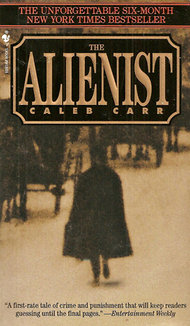
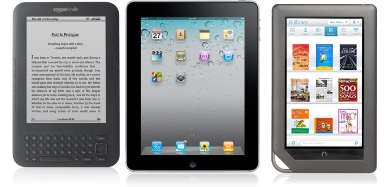 In the New York Times,
In the New York Times, 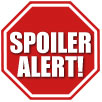 The butler did it. A new study by Nicholas Christenfeld and Jonathan Leavitt of the University of California, San Diego, indicates that
The butler did it. A new study by Nicholas Christenfeld and Jonathan Leavitt of the University of California, San Diego, indicates that 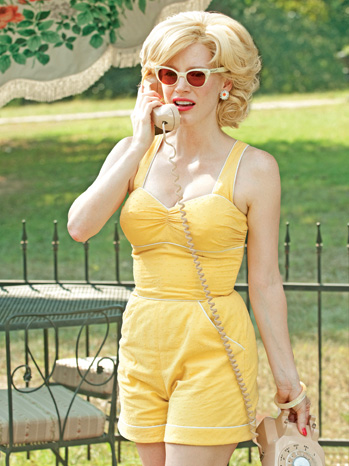 DreamWorks's adaptation of Kathryn Stockett's The Help required
DreamWorks's adaptation of Kathryn Stockett's The Help required 
 EW also offered sample tracks from the forthcoming compilation
EW also offered sample tracks from the forthcoming compilation 